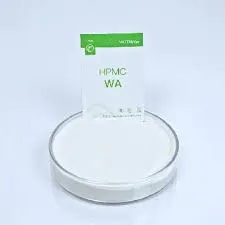
Sen . 24, 2024 21:42 Back to list
hpmc uses in detergent
The Role of HPMC in Detergent Formulations
Hydroxypropyl Methylcellulose (HPMC) is a versatile polymer derived from natural cellulose, widely recognized for its thickening, binding, and film-forming properties. In the detergent industry, HPMC plays a crucial role in enhancing the performance, stability, and user experience of various cleaning products. This article explores the various uses of HPMC in detergents and its impact on product effectiveness and formulation quality.
1. Thickening Agent
One of the primary roles of HPMC in detergent formulations is as a thickening agent. The viscosity of a detergent affects its application and effectiveness. By incorporating HPMC, manufacturers can achieve the desired viscosity without compromising the product's ability to clean. This property is particularly useful in liquid detergents, where a thicker formulation can enhance surface adhesion and improve the product's performance on soiled surfaces.
2. Stabilization of Formulations
In many detergent products, especially those containing surfactants, stability can be a significant concern. Surfactants can lead to phase separation or instability in formulations. HPMC acts as a stabilizer, helping to keep the ingredients evenly dispersed and preventing sedimentation. This stabilization is essential for ensuring that the product maintains its effectiveness over its shelf life and during storage and usage.
3. Enhancing Cleaning Efficacy
HPMC can improve the cleaning action of detergents by modifying rheological properties, thus influencing how the product interacts with dirt and stains. By adjusting the flow and spreading behavior of the detergent, HPMC allows for better coverage over surfaces, ensuring that the active ingredients are effectively delivered to the substrate. This enhancement in cleaning efficacy is particularly valuable in tough cleaning applications, such as grease and oil removal.
4. Film Formation and Residue Control
hpmc uses in detergent

Another remarkable property of HPMC is its ability to form films. In detergent formulations, this characteristic lends itself to the creation of a protective layer that helps in resisting dirt and stains from adhering to surfaces once cleaned. Additionally, HPMC assists in controlling the residue left on fabrics and surfaces post-wash, as its film-forming capabilities can reduce the tackiness often associated with traditional detergents. This attribute is increasingly important in consumer preference, as users seek products that wash clean and leave no undesirable residues.
5. Compatibility with Biodegradable Formulations
As sustainability becomes a growing concern, the demand for biodegradable and environmentally friendly cleaning products has surged. HPMC, being a natural polymer, is compatible with many biodegradable formulations. Its use in detergents allows manufacturers to create effective, eco-friendly products that meet consumer demands while adhering to environmental regulations. This compatibility enhances the ability of manufacturers to market their products as sustainable and safe for the environment.
6. Improved User Experience
The texture and usability of a detergent can significantly influence consumer preference. HPMC not only enhances viscosity but also improves the overall sensory experience for users. Products that are easy to pour, spread, and rinse away tend to be more favorable among consumers. Furthermore, HPMC's role in reducing the occurrence of streaking and filming on surfaces improves user satisfaction, leading to higher brand loyalty.
7. Synergistic Effects with Other Ingredients
HPMC can work synergistically with other ingredients commonly found in detergent formulations, such as surfactants and builders. This interaction can lead to an amplified cleaning effect and improved formulation stability. By carefully balancing HPMC with other components, formulators can optimize the performance of their products while maintaining cost-effectiveness.
Conclusion
The incorporation of Hydroxypropyl Methylcellulose (HPMC) in detergent formulations provides numerous advantages, including thickening, stabilization, and enhanced cleaning performance. As the detergent market continues to evolve, HPMC’s versatile properties will remain vital in developing innovative, effective, and environmentally friendly cleaning products. This adaptability not only meets the current demands of consumers for high-performance detergents but also aligns with the increasing emphasis on sustainability in the industry. The future of detergent formulations looks promising with the continued use of HPMC, driving advancements in product formulation and user experience.
-
Versatile Hpmc Uses in Different Industries
NewsJun.19,2025
-
Redispersible Powder's Role in Enhancing Durability of Construction Products
NewsJun.19,2025
-
Hydroxyethyl Cellulose Applications Driving Green Industrial Processes
NewsJun.19,2025
-
Exploring Different Redispersible Polymer Powder
NewsJun.19,2025
-
Choosing the Right Mortar Bonding Agent
NewsJun.19,2025
-
Applications and Significance of China Hpmc in Modern Industries
NewsJun.19,2025







